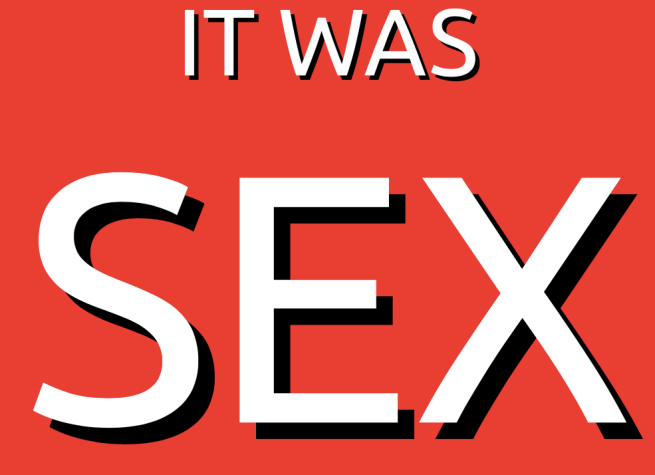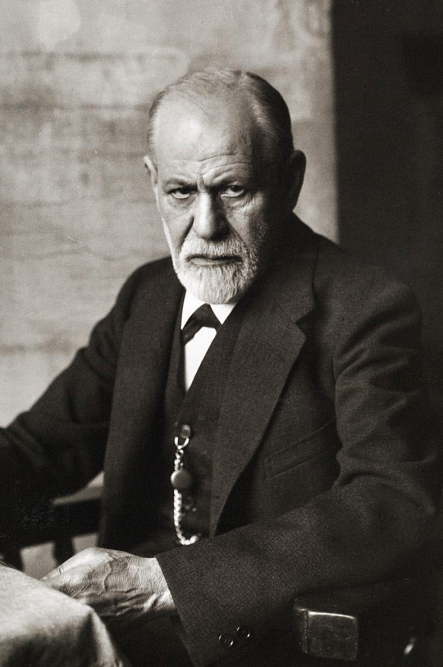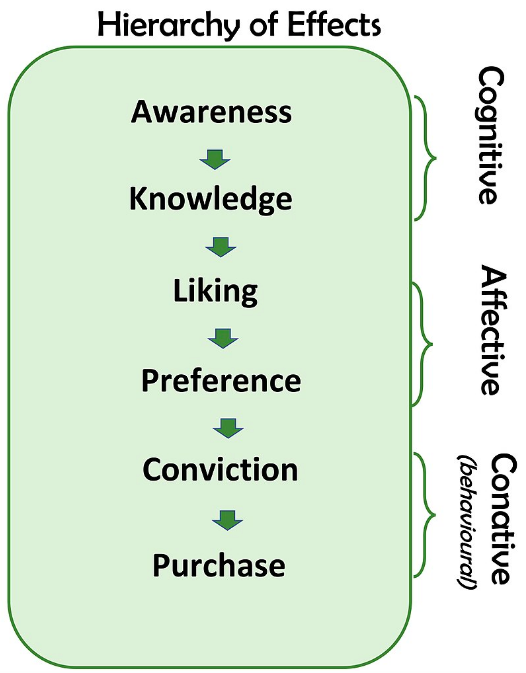I’ll give you three guesses what Freud interpreted the birds that emerged in his subjects’ dreams to mean. I’ll even give you a hint:—It’s erections. (What did you expect?)
And if the not-so-sly colon followed by a hyphen followed by the word “erections” wasn’t enough to put you off, then maybe you’re one of those likably typical types who, when confided to about sex in a more-or-less private setting such as this, you’re much more liable to get off than be put off (more or less, that is).
Freud may be universally mocked for relating everything under the sun back to sex, but he gives me an excuse to talk to you about a few things that are sure-fire to keep your eyes glued to the words on the page: 1) Sex; 2) Hypnotic Induction; and 3) How the first two things relate to good copy and marketing.
I was about to start reading E. Haldeman-Julius’s The First Hundred Million (highly recommended, by the way) and found the introduction had been written by the Prince of Print, “Sir Gary of Halbert,” Gary Halbert. Halbert tells us that “the first hundred million” refers to the first hundred million Little Blue Books E. Haldeman-Julius sold. These Little Blue Books had over 2,000 different titles, each on a different topic, and their sales gave rise to a narrative which described what Americans really wanted to read.
I’ll give you three guesses what it was. Here’s a hint:

Halbert throws around some numbers:
“The Evolution of Marriage” sold 20,000 copies.
“Prostitution of the Modern World”, however, sold 129,500 copies!
“Debate on Birth Control” sold 27,000 copies.
And “Modern Aspect of Birth Control”? It was read by 73,000 people.
(Halbert makes the clever comment, “I guess they didn’t want to hear all the arguments, they just wanted to know how to do it,” a mindset I think we can all appreciate and sympathize with.)
So the cliché “Sex Sells”? Well, it’s a cliché for a reason. And it’s the same reason (admittedly, among many) that Freud is such a household name.
It’s important to remember though that copy that triggers such a primal, emotional, subconscious response needs, needs, absolutely needs to associate the satisfaction of that subconscious desire and discomfort with the product your client has hired you to promote.
You might be already guessing how this leads into the second point I mentioned above. But if you don’t know where I’m going with this, don’t worry, I won’t leave you hanging. Keep reading. I’m first going to go over a little history to provide a better context to what hypnotic induction has to do with marketing and copywriting.
HISTORY AND THE FACTS
I mentioned Freud earlier because he’s what triggered this insight in me to write this post. I had been reading about his early interests in hypnotism, his apprenticeship and association with some of the original developers (Bernheim, Breuer, Charcot), when the relation with marketing occurred to me and I decided to jot it down for you now.
But the history of Freud isn’t interesting to you. As Halbert says, you don’t want to learn the facts, just how to do it. I can appreciate and sympathize.
I’ll quickly go over Freud’s description of the process of induction, or as he calls it “transference”, then we’ll get into the nitty-gritty of the how-to. Now, this is not absolutely essential information—and I’ll let you know this now, that I try in all of my blog posts to split them up into bite-size sections, so if at any moment you want to skip ahead (in any post I write) I encourage you to do so.
But though the history might not be essential, it’s certainly important if you want to get as much as you can out of hypnotic induction as a technique and framework for writing effective copy.
Back to Freud’s description.

Freud, it’s true, tried to distance himself later in life from hypnosis and what was then termed “direct suggestibility”, believing them to be hindrances to the subject’s ability to self-analyze, believing them akin to narcotics to which the subject could potentially become addicted—but it’s this obstacle to analysis that has solid overlap with the Freudian concept called “transference”.
The process of transference is very similar to the process of hypnotic induction.
Do me a favor. Imagine for me one of your fantasies. And I don’t mean a goal that you hope to achieve, but a fantasy that maybe you keep hidden—a forbidden fantasy; one of those fantasies that another part of your brain says you shouldn’t be having. (It’s okay, everyone’s got ’em.)
The part of your brain that desires this fantasy, Freud says, is the id, which is unconscious; and the part that’s critical of the fantasy, the super-ego, which is conscious, though only partially.
Marketers and copywriters try to trigger that unconscious part of your brain, the subcortical parts of the brain. The amygdala/brain-stem is associated with fear, the ventromedial prefrontal cortex and the hypothalamus is associated with sadness, and so on. When triggered the brain thirsts for satisfaction, which comes from the associated fantasy you imagined for me, which then associates with the super-ego’s response.
As promised, I won’t get too much into the technicals, but “transference” simply refers to the process when an analyst becomes a new association, as the super-ego. The analyst triggers that memory, that fantasy, in the subject, and rather than forbidding it, as the super-ego would, the analyist instead allows it and thus becomes a new association of satisfaction.
This is Freud’s explanation of the phenomenon in which a psycho-analytic patient begins to hold deep feelings toward the analyst.
Marketers and copywriters would do well to harness this process of infatuation. You would do well to harness this knowledge no matter what industry you’re in. Always keep in mind the forbidden fantasy you imagined for me to remember this process. (And, no need to fret, I won’t judge you for the sick, vile things you dream of; as long as you won’t judge me for mine.)
So let’s now move past those enticing images to the how-to. I’ll teach you what I’ve learned about the relation between this process, hypnotic induction, and marketing.
SEDUCTION THROUGH INDUCTION
While learning about hypnotic induction I came across several different methods hypnotherapists use to relax their patients. And in that search I came across this video by a hypnotist named Michael White who gives a great, succinct explanation of what induction is meant to accomplish:
1st: Achieve compliance and rapport. Build trust.
2nd: Get the subject’s attention.
3rd: Bypass critical factor.
4th: Stimulate the subconscious.
This is exactly what good copy needs to do to gain good feelings from a customer in order to associate those feelings with the client’s product—similar to what the analyst does when transference occurs in a patient.
You can also easily see its similarity to the famous AIDA (Attention—Interest—Desire—Action) marketers love to teach new up-and-comers. But here I’ve given you a more in depth understanding of why AIDA works: the customer is being induced through seductive hypnotism!

Now before we move on, let’s be clear about something.
There’s a lot of misinformation about hypnotism. And part of the fear and/or scruples people have with hypnotism stems from these misunderstandings. I think of David Ogilvy describing the terror and moral qualms after directing an ad that directly attempted to hypnotize consumers into buying a client’s product. “Suspecting that hypnotism might be an element in successful advertising, I engaged a professional hypnotist to make a commercial. When I saw it in the projection room, it was so powerful that I had visions of millions of suggestible consumers getting up from their armchairs and rushing like zombies through the traffic on their way to buy the product at the nearest store.” Ogilvy then proceeded to burn the copy of the ad, fearful of causing a national scandal.
This is not hypnotism. That’s subliminal messaging. Which is not scientifically based.
Now, 1) As many hypnotists/-therapists will tell you, every person under the influence of hypnosis is merely in a highly suggestible state of trance, i.e. “sleep-state”. Every hypnotist I came across made it very clear that subjects in a trance can never be compelled to do something they don’t want to do. Like the marketer, the hypnotist only has the power of persuasion.
And, 2) I’m NOT suggesting that “pure” hypnosis should be used in marketing. What I’m saying is that the power of persuasion which both the marketer and the hypnotist wield can be better understood when analyzed from a new, different perspective. So I advise you what I’ll call the Spiderman Caveat: “With great power (of persuasion) comes great responsibility (to the consumer)”; meaning, Don’t persuade people to by a shoddy product.
Let’s get back, though, to the cool sh*t.
1st: ACHIEVE RAPPORT
This step’s easiest to understand. Simply get the attention of the customer. Initial emotional triggers work best, but hold off on highlighting dissatisfaction in the customer until later. (Using the word, FREE for instance grabs attention without signaling in the consumer the parts of their life that could be satisfied by the client’s product.)
2nd: GET THE SUBJECT’S ATTENTION
This next section is tied to Interest. I’m always reminded of Alec Baldwin’s infamous speech from Glengarry Glen Ross when thinking of AIDA: “Interest: Are you interested? I know you are, ’cause it’s f*ck or walk. You close or you hit the bricks.” After you’ve gotten their initial attention—after they’ve realized and become aware of the fact that they’re not just being advertised to, but are more importantly being helped by someone who understands them on a primal, lizard-brain level—then you’re going to want to point to the product you’re representing for your client. It’s no secret people turn away quickly from ads—no one likes being advertised to—but those same people find it a lot harder to turn away from human contact. So you need to present the product personably, your copy needs to have personality—that way when you present your product you won’t get a refusal up front. This step is merely an extension off the first and seeks to gain a potential customer’s interest by naming the product.
It’s of importance to note that the reason behind the countdown hypnotists use to relax their subjects regards numbers as a finite object that is easily understood, can easily be focused on, while the subject’s conscious mind (their rational mind) is relaxed. It’s often advised to those writing long copy such as blog posts to include numbers (such as lists). The effectiveness of this is similar to the hypnotic countdown. It provides a steady, objective base on which the consumer can stand while being sold a product.
3rd: BYPASS CRITICAL FACTOR
In hypnotism this part refers to the classic “snapping fingers.” The purpose is to subvert fully the prefrontal cortex in order to get a response from the subcortical/emotionally responsive parts of the brain. The snapping triggers anticipating and anxious feelings from the amygdala which in the hypnotic induction is similar to Freud triggering subconscious fantasies in his subjects.
For the copywriter this is similar to eliciting an emotional response in the consumer. It’s often said that people’s purchases stem more from emotion than reason. The explanation is the bypassing of the critical factor.
Obviously the emotional response doesn’t always have to be fear or anxiety, but can be a “positive” response of joy, trust, belonging, leadership, etc. You can tailor your copy to the audience you’re speaking to, triggering the response that would most effect their specific type. Read my blog post here on the Five Factor Model to get a better understanding of how to determine your audience types and tailor your copy to appeal to that type.
But do that later. For now stick with me here while I tell you this last step.
4th: STIMULATE THE SUBCONSCIOUS
Once the critical factor’s been bypassed, the hypnotist commands the subject in their subconscious state to sleep. For the marketer, this is the call-to-action. The consumer is in the state of mind of fantasy and primal emotion; what the copy needs to do, is create an association between the fantasy (perhaps a memory triggered by the copy), the satisfaction of that desire, and the assurance that this desire is normal and satiable (think of transference and the super-ego) with the client’s product.
That assurance also comes in the form of what the copy must do immediately after the call-to-action, which is re-assurance that the action is helpful and was rationally chosen—that the consumer’s choice was well-chosen. In hypnosis this comes in the form of another countdown and kind but stern words; in copy this comes in the form of stats (more numbers), gratitude and more facts.
What Halbert said about the consumer’s disregard of facts is true—but what the consumer absolutely wants is, if not the facts themselves, then the offering of facts, as reassurance for their choice, as a furtherance of the seductive process that leads to brand loyalty.
This reassurance leads me to the final section of this post, which is just a simple description of a specific type of induction and how it can be used in copy—namely, long copy.
So let me leave you with:
FRACTIONATION

The fractionation induction technique is, as far as I could find, one of the most effective methods hypnotherapists use to put their subjects in a trance. Pay close attention and you’ll see, with everything I’ve said above kept in mind, how its main premise can be transferred onto the process of writing solid, suggestive copy.
The main premise of fractionation? Hypnotherapists found that with each succeeding session with a patient, they were with greater ease and less time, able to put said patient in a deeper trance than in the previous session.
And lo! a new induction technique was born!
Fractionation involves putting someone in trance, then taking them out, then putting them back in for a longer period of time, taking them back out, putting them back in again, and so on—each succeeding trance deeper than the last.
The explanation is similar to the explanation above regarding the third step of induction, bypassing the critical factor.
By first putting the client in a relaxed state only to then abruptly take them out, the subconscious is fractionated, further opening it up for suggestion.
In copy—long copy, specifically—this can be done by sprinkling emotional triggers throughout. Every couple paragraphs, in one line, make the reader feel uncomfortable, stimulate a desire, trigger their thirsts; then use the reassurance step to calm them back down, make them feel safe. Advertising can sometimes make the mistake of pandering—but this can lead to the “nice-guy syndrome” which plagues many guys who complain about the so-called “friend-zone”.
As a copywriter your job isn’t to patronize the consumer, but to stimulate and remind them that their life could always be better. You’ve got to know how to be appropriately aggressive, how to make them realize that discomfort, and then how to ease them back in to comfortability via reassurance.
This is how trust and loyalty is built, through shared understanding of desires and fantasies.
Freud understood this, which is another of the many reasons why his name is so familiar 100 years later.
All right, I got to jet, but I hope you enjoyed this post. I know there are a lot of opinions on hypnosis in advertising and I’d be interested to know what you think. Leave a comment below with your thoughts.
Also, hit the like button and follow for some more blog posts coming up. Last blog I mentioned a post about the RIASEC model which should be coming up soon. The RIASEC model, I believe, could really help copywriters who specialize in B2B copy tailor their copy to match the personalities within a particular industry. Should be really interesting. Stay tuned.
If you need me for anything else–if you’re looking for some copy to be written, I’d be glad to help. My email address and twitter are down below. Right now I’m offering my first project with you free of charge. It’s my way of eliminating risk for you while also building experience for myself. I want to learn as much as I can. That is, copy that ends up working for you, tells me I’m on the right path. And if I write copy for you that doesn’t succeed on the level you hoped, that initial free of charge offer doesn’t hurt you at all and tells me where I need to change. No hard feelings. It’s one of those rare “Win-Win” scenarios.
Have a good one.
Enjoy yourself and life.
Best,
Cameron E. Reilly (ER Copy)
Twitter: https://twitter.com/ercopywriting
Email: cameronedwardreilly@gmail.com
Instagram: https://www.instagram.com/ercopywriting/

